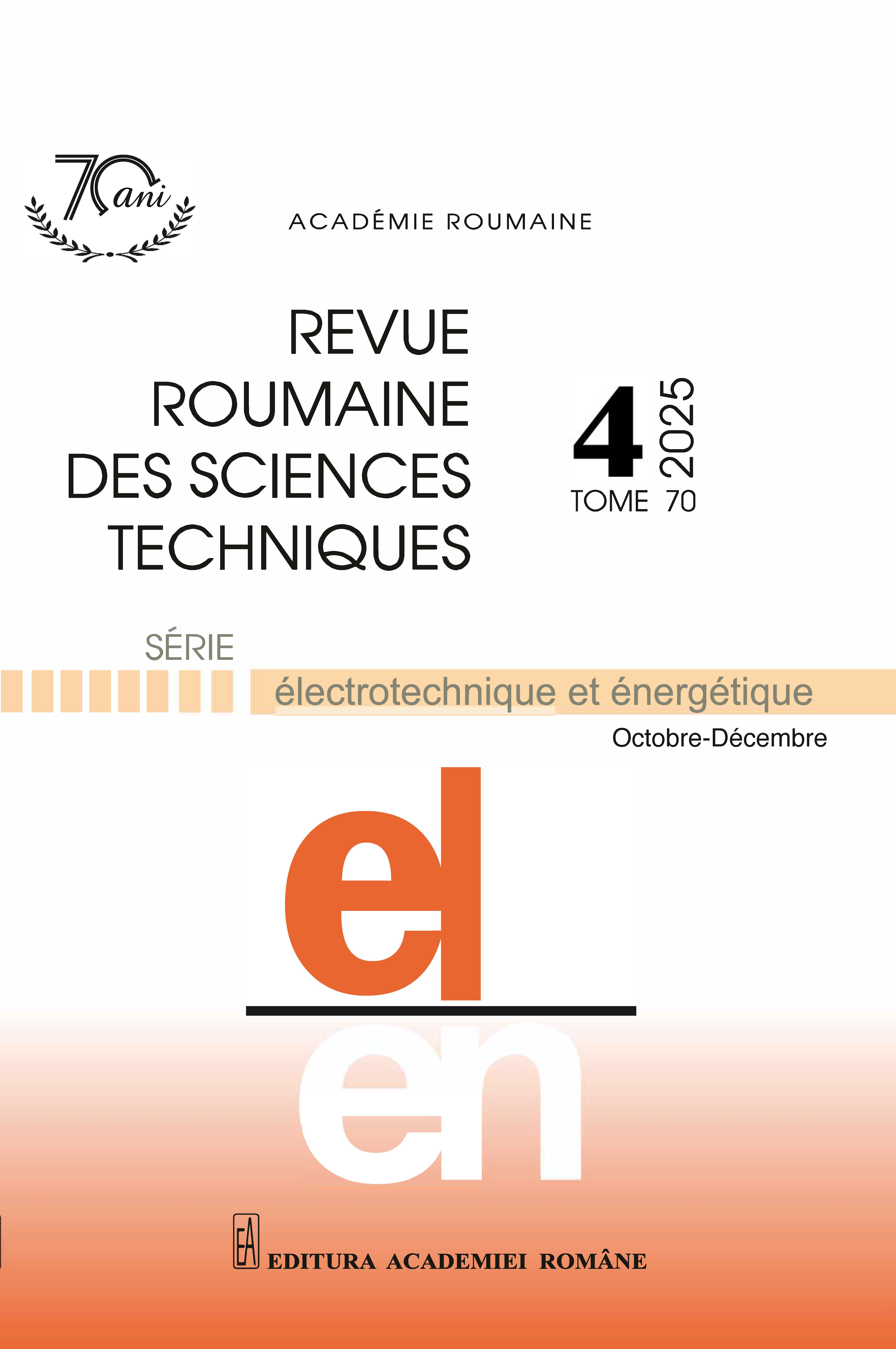A MIXED DOPPLER SHIFT AND POLARIZATION MANAGEMENT APPROACH FOR SATELLITE COMMUNICATIONS
DOI:
https://doi.org/10.59277/RRST-EE.2025.4.22Keywords:
Alsat-2A Satellite, Alsat-2B Satellite, CDM 600 Application, Doppler shift, Estimated Doppler shiftAbstract
The rapid displacement of satellites in low Earth orbit (LEO) poses several challenges for communication with the ground segment. One of the main problems encountered is significant Doppler frequency shifts, which can disrupt signal transmission and require precise adjustments to maintain stable communications. This paper presents a software solution to effectively compensate for the Doppler shift, along with a hardware implementation to manage the two available polarizations at the station: right-hand circular polarization (RHCP) and left-hand circular polarization (LHCP). This polarization management is necessary because the demodulator used in our case possesses only a single input. This solution has been implemented in an existing S-band ground station (GS) located in Oran, Algeria. The experimental results obtained during actual passes of the ALSAT-2A and ALSAT-2B satellites, whose orbits are 180 degrees apart, were satisfactory. The implemented solution showed good results, with accuracy comparable to the estimated Doppler frequency, without any loss of telemetry at the ground segment level.
References
(1) L. Antiufrieva et al., Features of frequency synchronization algorithms DVB-S2 (X) for LEO satellites, In 2021 23rd International Conference on Digital Signal Processing and its Applications (DSPA), IEEE (2021).
(2) J.E. Benmansour and B. Khouane, Feed-forward control design for roll/yaw attitude flexible spacecraft based on the disturbance observer, Rev. Roum. Sci. Techn. – Électrotechn. et Énerg., 67, 2, pp. 187–191 (2022).
(3) J.E. Benmansour, R. Roubache, B. Khouane, and N. Bekhadda, Robust attitude controller and fault detection of flexible satellite, Rev. Roum. Sci. Techn. – Électrotechn. et Énerg., 70, 1, pp. 121–126 (2025).
(4) O. Nia and B.L. Mark, Models for frequency doppler shift prediction for LEO satellites at L-band, Military Communications Conference (MILCOM), IEEE (2022).
(5) E.G. Peters, K. Day, and C.R. Benson, A real-time Doppler compensating physical/data link layer protocol for satellite communications, In 2020 IEEE Aerospace Conference, IEEE (2020).
(6) E.G. Peters and C.R. Benson, A Doppler correcting software defined radio receiver design for satellite communications, IEEE Aerospace and Electronic Systems Magazine, 35, 2, pp. 38–48 (2020).
(7) M.Z. Baba-Ahmed, R.D. Taleb, M.A. Rabah, S. Benabbou, and M.I. Soufi, Hybrid design patch antenna for X-band satellite communication, Rev. Roum. Sci. Techn. – Électrotechn. et Énerg., 70, 3, pp. 379–384 (2025).
(8) A. Aloman, M.P. Garcia, I. Nicolaescu, F. Popescu, and L. Buzincu, Circularly polarized periodic leaky-wave antenna based on a coaxial line with helical slot, Rev. Roum. Sci. Techn. – Électrotechn. et Énerg., 70, 1, pp. 87–90 (2025).
(9) M. Katayama, A. Ogawa, and N. Morinaga, Carrier synchronization under Doppler shift of the nongeostationary satellite communication systems, Proceedings Singapore ICCS/ISITA92, IEEE (1992).
(10) J.J. Van de Beek, M. Sandell, and P.O. Borjesson, ML estimation of time and frequency offset in OFDM systems, IEEE Transactions on Signal Processing, 45, 7, pp. 1800–1805 (1997).
(11) I. Ali, N. Al-Dhahir, and J.E. Hershey, Doppler characterization for LEO satellites, IEEE Transactions on Communications, 46, 3, pp. 309–313 (1998).
(12) I. Ali et al., Doppler applications in LEO satellite communication systems, Vol. 656, Springer Science & Business Media (2005).
(13) S. Bekkar Djelloul Saiah et al., Analysis of the communication links between the AlSat‐1b satellite and the ground station: The impact of the Auto Tracking system on antenna pointing accuracy, International Journal of Satellite Communications and Networking, 39, 5, pp. 486–499 (2021).
(14) C.H. Cho et al., Antenna control system using step tracking algorithm with H∞ controller, International Journal of Control, Automation, and Systems, 1, 1, pp. 83–92 (2003).
(15) D. Nieto Yll, Doppler shift compensation strategies for LEO satellite communication systems, Universitat Politècnica de Catalunya (2018).
(16) H. Rouzegar, M. Nasirian, and M. Ghanbarisabagh, Novel algorithm for tracking LEO satellites using Doppler frequency shift technique, Wireless Personal Communications, 96, pp. 2161–2178 (2017).
(17) E. Bensikaddour et al., Azimuth, elevation, and Doppler shift estimation for LEO satellites based on an open source Python package, Automatic Control and Computer Sciences, 57, 2, pp. 203–212 (2023).
(18) C. Cao and S. Zhai, The influence of LEO satellite Doppler effect on LoRa modulation and its solution, In Journal of Physics: Conference Series, IOP Publishing (2021).
(19) A. Al-Hourani and B. Al Homssi, Doppler shift distribution in satellite constellations, IEEE Communications Letters (2024).
(20) A. Bab et al., hybrid implementation of a Doppler shift compensation solution for LEO satellite communication systems, International Symposium on Electronics and Telecommunications (ISETC), Timisoara, Romania, pp. 1–5 (2024).
(21) ***Comtech EF Data, CDM-600 Satellite Modem (2024).
(22) J.M. Gongora-Torres et al., Elevation angle characterization for LEO satellites: First and second order statistics, Applied Sciences, 13, 7, 4405 (2023).
(23) J. Mass and E. Vassy, Doppler effect of artificial satellites, In Advances in Space Science and Technology, Elsevier, pp. 1–38 (1962).
(24) Mini-Circuits, ZX80-DR230-S+ RF amplifier (2024). Available: https://www.minicircuits.com/pdfs/ZX80-DR230+.pdf?srsltid=AfmBOoqP2RYWioZNBWZihsQH4gSQPQuA4iFcqcaHxMDqTLzh4sMM
Downloads
Published
Issue
Section
License
Copyright (c) 2025 REVUE ROUMAINE DES SCIENCES TECHNIQUES — SÉRIE ÉLECTROTECHNIQUE ET ÉNERGÉTIQUE

This work is licensed under a Creative Commons Attribution-NonCommercial-NoDerivatives 4.0 International License.


